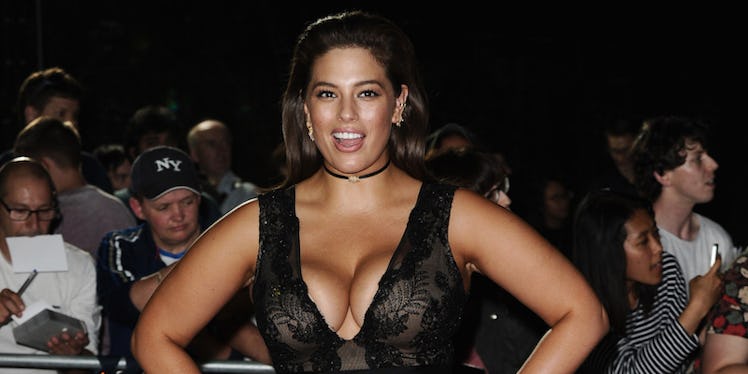
The Average US Woman Wears Size 16-18, But Nobody Makes Clothes For Her
Here's a riddle for you: If plus size is actually average size, does that make it just a regular size? In the United States, it seems not to.
By now, you may have seen the splashy news: In America, the average woman wears clothing sized between 16 and 18 (or 20W, if we're speaking plus-size terminology). The news comes straight from a study published in the International Journal of Fashion Design, Technology and Education.
The authors of this particular research project recommend the fashion industry should consider women who can't fit into straight sizes a "major priority.” That sound you hear is a million size 16 women snorting derisively in unison.
The unfortunate reality of the situation is that curvy role models like Ashley Graham, Iskra Lawrence (who falls somewhere between straight and plus sizes) and the like could essentially storm the gates of Castle Gucci without ever making on iota of difference.
It's a fact that's long frustrated larger women, even the famous ones.
Remember just months ago when comedian Leslie Jones revealed no designers wanted to make her a dress for the “Ghostbusters” movie premiere? She didn't fit into a sample size, so it was too much work for fashion houses. (Fashion houses that have built businesses on making dresses, I might add.)
Even megastar Melissa McCarthy launched her own line, Seven7, after being appalled at the lack of options available to women over size 14.
She told People,
I find it incredibly bizarre that we've taken the biggest grouping of people and we're saying, 'Oh, I don't want your business.' It's like opening a restaurant and saying, 'But we're not going to serve food to hungry people. You can't come in if you want to eat.'
Indeed, even the media has rallied behind the body acceptance cause. Refinery29, for example, just rolled out its “67 Percent Project.” In partnership with Lane Bryant and Aerie, the website plans to dedicate 67 percent of its editorial and imagery to plus-size women.
It even launched a plus-size stock imagery initiative in collaboration with Getty Images.
The idea is that if larger women can finally be seen as real people with problems, fashion sense and style, clothing brands will take them seriously.
Will it work? Only time can tell. Every voice that adds to the collective shout gives plus-size women a better chance of being heard.
And, if you've never checked Twitter, let me clue you in: Women, size 16 and above, are itching to be heard.